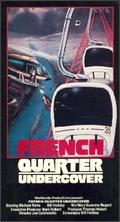|
Mississippi Aerial River Transit
The Mississippi Aerial River Transit, or simply MART, was a gondola lift transport system spanning the Mississippi River in New Orleans, Louisiana, United States. It was constructed for the 1984 Louisiana World Exposition. After the fair, this served as the second urban aerial lift and the first gondola lift commuter system in the United States,[3] in operation for just a year before closing. The system featured 53 separate cars, a 2,300 feet (700 m) cross-river cable, twin steel towers that lifted the cable 200 feet (61 m) into the air, two station houses, concrete pillars that anchored the cable and two 358 feet (109 m) steel towers.[4] Each of the two main towers were supported with 12-inch (300 mm) steel piles driven 285 feet (87 m) into the ground, with each tower weighing 200 short tons (180 t).[4] Its twin towers were the tallest ever constructed for a gondola lift at the time.[5] (The London Cable Car in the UK, built nearly three decades later, would exceed this former record by 50%.) HistoryPlans for the gondola were initially approved by the city on May 6, 1982.[6] It was developed by the Mississippi Aerial River Transit-Perez Inc., or MART-Perez, which included noted local architect August Perez III. In 1983, the Banque de l'union européenne of Paris provided financing for the project through an $8 million loan.[4] In foreshadowing the future problems the gondola would face, on its maiden crossing, after being blessed by Archbishop Philip Hannan, the ride would temporarily stall.[7] The ride took four minutes to complete and crossed over 300 feet (91 m) above the Mississippi River, and had a maximum capacity of 2,000 passengers per hour.[4][7] During the fair, this was billed as the signature ride of the exhibition; however, it drew only 1.7 million riders, half as many as projected. Built to showcase a form of non-polluting commuter transit, after the fair the system was open for use by commuters traveling from Algiers in the Mississippi's West Bank to the Warehouse District across the river, where the fair was held. By April 1985, the system would shut down due to low ridership.[8] Later in 1985, the Banque de l'union européenne would file suit against MART-Perez when they defaulted on the $8 million loan. As a result of nonpayment, in 1986, MART was ordered by a federal court to pay the bank $5 million, plus $1.2 million in interest and attorney fees.[9] However, MART never made a payment, and as a result, the gondola was seized by the United States Marshals Service in June 1989.[9] After the seizure, the system was put up for auction in August with New York City businessman Moey Segal placing the winning bid of $1.6 million.[10] Segal intended to deconstruct the system and relocate it to Corpus Christi, Texas.[11] It was intended to transport tourists from the primary hotel area to the Texas State Aquarium across the ship channel.[11] Due to litigation, the proposal to move the system to Texas was dropped and Segal transferred its ownership to the 7349 Corp in 1990.[12] Following the failed proposal to relocate the gondola, the system was the site of several, notable local events prior to its demolition. On January 21, 1993, Christopher Vincent base-jumped from the top of the East Bank tower twice. He completed the stunt for the first time at approximately 10:30 a.m. and again later that afternoon at approximately 2:30 p.m. Each time he was successful in landing on the Mississippi River levee.[13](Note: There is no levee at the East Bank location; a concrete flood wall exists, but would be unsuitable for landing on, as it's only about two feet thick. There is a levee at the West Bank tower location.) On August 19, 1993, four Greenpeace activists were successful in hanging a banner from the system that stated "Break the circle of poison" in protesting the shipment of toxic pesticides through the Port of New Orleans.[14] 
Stations
Companies involved in its construction
In popular culture
ReferencesWikimedia Commons has media related to Mississippi Aerial River Transit.
|
||||||||||||||||||||||||||||||||||||||||||||
